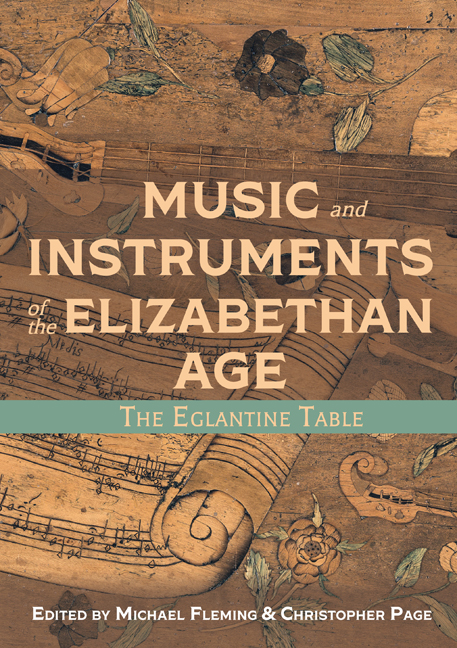Book contents
- Frontmatter
- Dedication
- Contents
- List of Illustrations
- Foreword
- Acknowledgements
- Note to the Reader
- List of Abbreviations
- Introducing the Eglantine Table
- Part I Silent Things
- Part II Music and Instruments
- Part III Broader Views of the Eglantine Table
- Appendices
- Glossary
- Bibliography
- List of Contributors
- Index
- Plate section
Appendix 1 - The Renovation of the Eglantine Table by Tankerdale Ltd, 1996
Published online by Cambridge University Press: 24 March 2021
- Frontmatter
- Dedication
- Contents
- List of Illustrations
- Foreword
- Acknowledgements
- Note to the Reader
- List of Abbreviations
- Introducing the Eglantine Table
- Part I Silent Things
- Part II Music and Instruments
- Part III Broader Views of the Eglantine Table
- Appendices
- Glossary
- Bibliography
- List of Contributors
- Index
- Plate section
Summary
Editorial introduction
In this Appendix John Hartley and Robin Merrifield of Tankerdale Ltd report the work they carried out on the Eglantine Table in 1996. Their account, which in places takes the form of notes rather than continuous prose, is here printed as received, apart from the description of work on the frame, which has been slightly abbreviated. Editorial clarifications appear in square brackets.
The report describes the complex structure of the inlaid table-top and its stand, details the restoration work, and names both the original materials and those encountered and used during restoration. Where locations such as ‘above’, ‘below’, ‘left’ and ‘right’ are indicated, they refer to the Table as viewed from the side of frieze C. For a colour reproduction of the whole top see Plate 2; for a diagram of the replacement parts see Plate 3. For definitions of some specialist terms used in the report, see the Glossary, pp. 246–50.
The original woods involved are listed below (in alphabetical order). Softwoods (pine, fir, spruce, etc.) and burr woods are notoriously difficult to identify precisely without microscopic examination, yet while these identifications are not the result of scientific examination, they are based on the very extensive experience of those who worked on the Table.
Structural woods: apple, ash, beech (also as dowels), lime, oak (dowels and supports), pear, softwood (dowels, possibly pine), walnut.
Inlaid woods: Acer (probably A. campestre, field maple), apple, bog oak, boxwood, elm, hazel(?) burr, holly, lime, mulberry, pear, plum, softwood (possibly pine), walnut.
Hardwick Hall: Eglantine Table Treatment Report 1996 (HHE.F.360/CMS 1127774)
The table top is divided into three boards, held together along their joints with oak dowels. The central panel is one solid board that runs the full length of the table top. The other two boards are formed from shorter length boards that have been glued together.
- Type
- Chapter
- Information
- Music and Instruments of the Elizabethan AgeThe Eglantine Table, pp. 231 - 239Publisher: Boydell & BrewerPrint publication year: 2021

